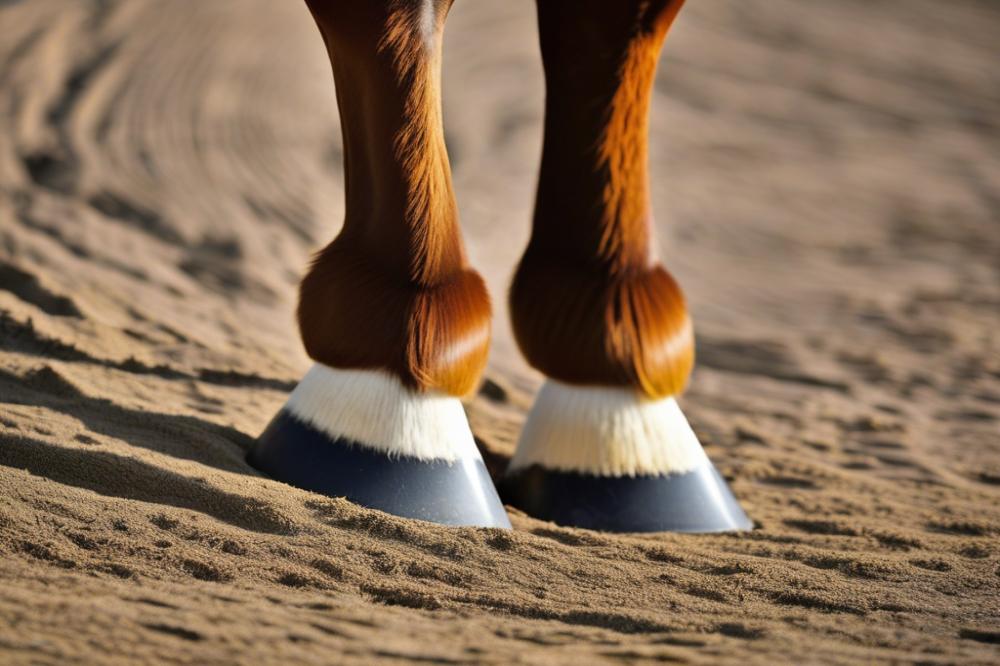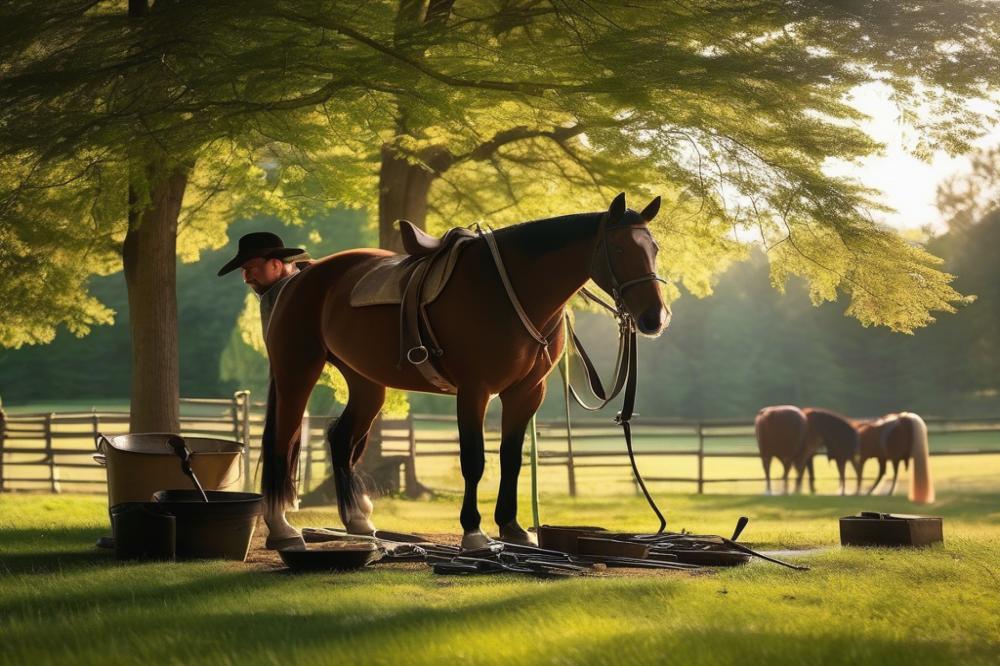The Importance of shoeing-horses-in-harsh-desert-conditions”>healthy hooves: Why shoeing Is Essential for working horses
Hooves are not just a part of a horse; they are essential to its overall health. A horse’s hooves support its entire weight and influence its ability to move comfortably. Maintaining their well-being is crucial for any equine, but especially for working horses. When hooves are healthy, horses can perform tasks efficiently and safely.
Working horses play an invaluable role in various industries, from agriculture to transportation. They might carry heavy loads, pull carts, or even work in competitive sports. In this context, shoeing becomes more than a routine task; it is critical to their performance. Proper shoeing protects their hooves from wear and tear, often caused by hard surfaces or rough terrain.
Care and maintenance of hooves extend beyond shoeing. Regular trimming is vital to prevent hoof overgrowth, which can lead to discomfort or injury. Additionally, inspecting hooves for any signs of issues—like cracks or infections—is important for overall care. Each of these aspects contributes to the horse’s performance and well-being.
This article delves into various topics surrounding hoof care and maintenance. We will explore the benefits of shoeing, how to recognize when a horse needs attention, and the practices that promote hoof health. Understanding these factors can lead to improved performance and a happier horse.
healthy hooves: The Foundation of Horse Welfare

Healthy hooves are defined by their strength and structure. A solid hoof has a thick, well-formed hoof wall, a resilient sole, and a healthy frog. These characteristics contribute to overall stability and support. When horses have sound feet, they exhibit a natural resilience that allows them to move freely and comfortably. They can also maintain proper posture, which is essential for their physical health.
The condition of a horse’s hooves plays a critical role in its well-being. When hooves are kept in good condition, the horse can walk, run, and work effectively. Good hoof health helps prevent injuries and reduces the risk of infections. Additionally, horses with healthy hooves are generally more energetic and responsive, enhancing their ability to perform tasks. Issues with the hooves can lead to pain, discomfort, and can hinder a horse’s ability to perform at its best.
In the world of performance horses, hoof health becomes even more significant. These animals often engage in demanding activities like jumping or racing. Problems with feet can drastically affect a horse’s performance levels. The importance of regular hoof care cannot be overstated, as it directly influences a horse’s training and ability to compete successfully. A well-cared-for hoof supports overall athleticism and allows horses to participate fully in their roles.
The Role of Farriery in Hoof Care

Farriery is the specialized craft of caring for horse hooves. A farrier plays a crucial role in maintaining hoof health, much like a dentist does for human teeth. Hoof care is not only about keeping horses comfortable; it is essential for their overall well-being and performance. Without proper attention from a skilled farrier, horses can face a range of painful problems.
The shoeing process involves several steps. Initially, the farrier evaluates the horse’s hooves for any signs of stress or injury. This assessment is key in determining how to proceed. After this check-up, the farrier trims the hoof to a healthy length, removing any damaged or overgrown parts. Next, a shoe is selected based on the horse’s specific needs and the terrain they will work on. Shoes can be made from various materials like steel, aluminum, or synthetic substances, each having its benefits. Choosing the right type significantly impacts a horse’s performance and comfort.
Regular visits from a professional farrier yield numerous benefits. These visits help in early detection of potential issues that could escalate if left untreated. Moreover, a farrier can provide guidance on proper hoof care techniques for horse owners. Consistency in hoof care leads to better overall hoof structure, which promotes healthier movement. Happy horses are not just a pleasure to ride but also less prone to injury.
Hoof Maintenance and Trimming Practices
Proper hoof maintenance is crucial for the overall health of working horses. Neglecting this aspect can lead to serious issues. Regular care helps prevent problems like cracks and infections. A consistent routine protects the horse from pain and performance loss.
Trimming plays a significant role in keeping hooves balanced. Overgrown hooves can become uneven, leading to discomfort. Regular trimming promotes healthy growth and stability. This practice ensures that a horse can move freely and efficiently. Balanced hooves also help in distributing weight evenly, which reduces strain on joints.
Different techniques are employed for trimming hooves. These methods can include using various tools like nippers and rasps. Proper technique allows a farrier to shape the hoof correctly. Good trimming minimizes the risk of lameness. It also contributes to the overall strength of the hoof structure.
Hoof maintenance should not be overlooked. Each horse has unique needs, and understanding them is essential. Regular check-ups with a farrier help catch potential issues early. This proactive approach reinforces the importance of hoof care. Owners should prioritize these practices to maintain their horse’s well-being.
The Effect of Improper Shoe Fit on Performance
Understanding Hoof Balance
Maintaining hoof balance is crucial for any horse. It influences how they move and perform. A balanced hoof means that the weight is evenly distributed. This balance allows horses to move freely without restriction. Without proper balance, their athleticism can suffer.
Consequences of Poor Fit
Poorly fitted shoes can lead to multiple issues related to performance and overall health. When shoes don’t fit right, they can cause discomfort. Horses may show signs of uneven wear or lameness. A horse in pain will not perform to its best ability. Moreover, long-term issues may develop if shoe problems persist. These problems could include chronic pain or even structural changes to the hoof.
Signs of Improper Fit
Identifying signs of improper shoe fit is essential for quick action. Watch for limping or head bobbing when a horse moves. Checking for uneven hoof wear can provide clues about shoe alignment. A horse that refuses to pick up speed may be struggling with discomfort. Additionally, be on the lookout for swelling around the hooves. If any of these signs appear, a vet or farrier should be consulted immediately.
Equestrian Practices to Ensure Healthy Hooves
Taking care of a horse’s hooves is crucial for their overall wellbeing. Regular hoof inspections can catch issues before they become serious. A consistent schedule for cleaning hooves helps remove dirt and debris, reducing the risk of infections. Owners should pick out their horse’s hooves daily and look for any signs of trouble.
Diet also plays a vital role in hoof health. Feeding horses high-quality forage is important. A balanced diet rich in biotin, zinc, and essential fatty acids can strengthen hooves. Supplements formulated specifically for hoof support might be beneficial. Always consult with a veterinarian or an equine nutritionist to select the best options for your horse.
Routine hoof care from a qualified farrier is essential. Every six to eight weeks is a common timeframe for trimming or shoeing. This routine helps to maintain the correct hoof shape and balance, which prevents lameness. Preventative measures, such as getting horses shod seasonally, can also protect against wear and tear on different surfaces.
Recognizing signs of hoof distress is key. Look out for cracks, chips, or abnormal growth. Changes in movement can indicate discomfort or pain. Responding quickly to these signs can prevent worsening problems. Always prioritize hoof care in your horse management routine.
Final Thoughts on Hoof Health and Care
In summary, the significance of maintaining healthy hooves cannot be overstated. Working horses rely on strong and sound feet for their daily tasks. Ignoring hoof health can lead to serious issues, impacting both performance and overall well-being. Regular hoof care is essential in preventing complications that can arise from neglect.
Shoeing plays a critical role in protecting a horse’s feet. It acts as an added layer of support and durability, especially for those engaged in heavy labor. Additionally, proper shoeing can correct certain gait problems and enhance performance. Owners must recognize that every horse has unique needs, which is why consulting with a professional farrier is vital.
As stewards of these remarkable animals, horse owners have a responsibility to prioritize hoof health. Regular inspections and timely shoeing practices should be integral parts of their equestrian routines. It is not just about aesthetics; it is about ensuring the horse can thrive and perform at its best.
Take the time to learn about hoof maintenance and the signs of distress. Encourage a relationship with farriers and veterinarians who understand the importance of this aspect of care. By putting hoof health at the forefront, we can foster happier and healthier working horses for years to come.



